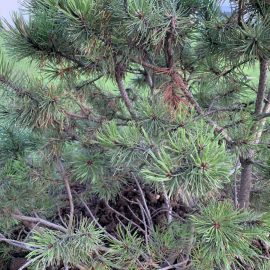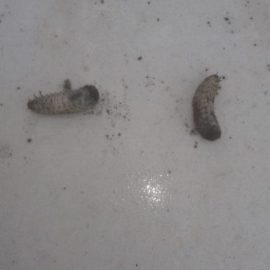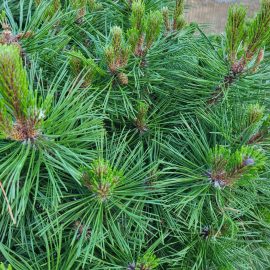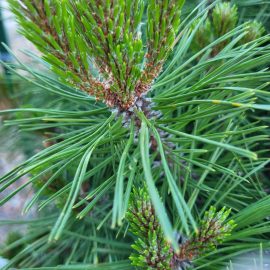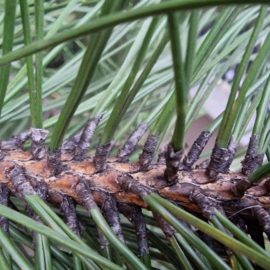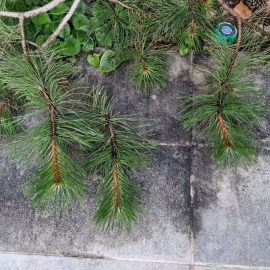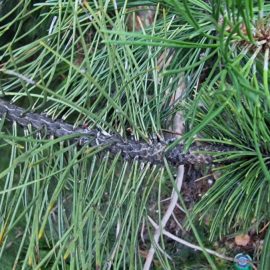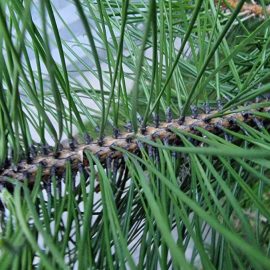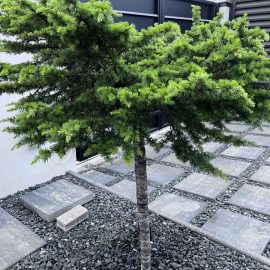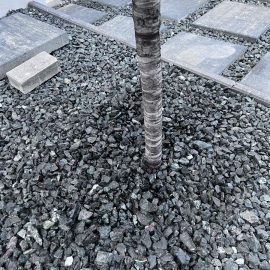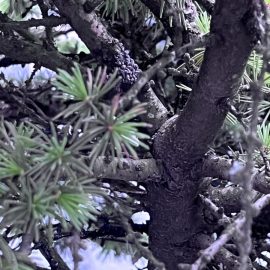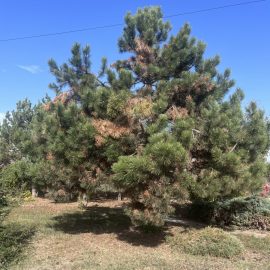Pine, planting guide and care work
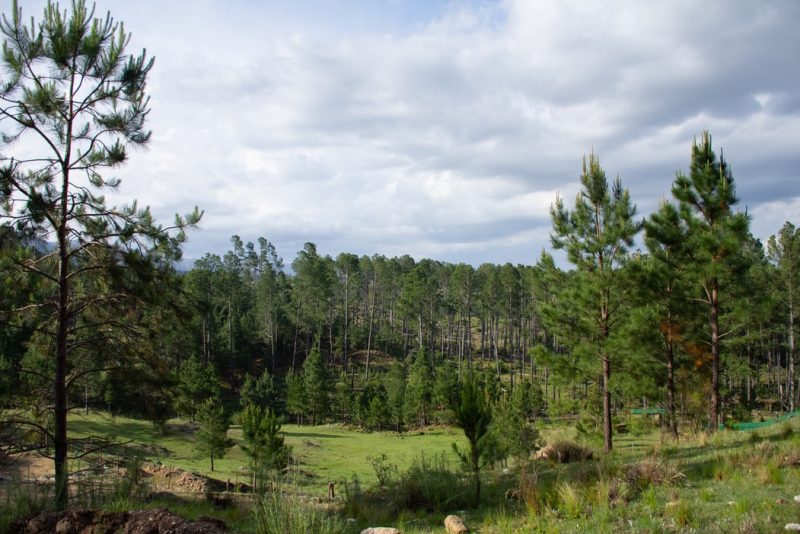
The Pinus genus is part of the Pinaceae family and it includes both large tree species and shrubs. The persistent acicular leaves are specifically placed, in groups of 2, 3, or 5 in a membranous pod. There are 4 commonly known species of pines (Scots pine, Black pine, Mountain pine, and Swiss pine), respectively several species native to North America, the Himalayas, and the Balkan peninsula.
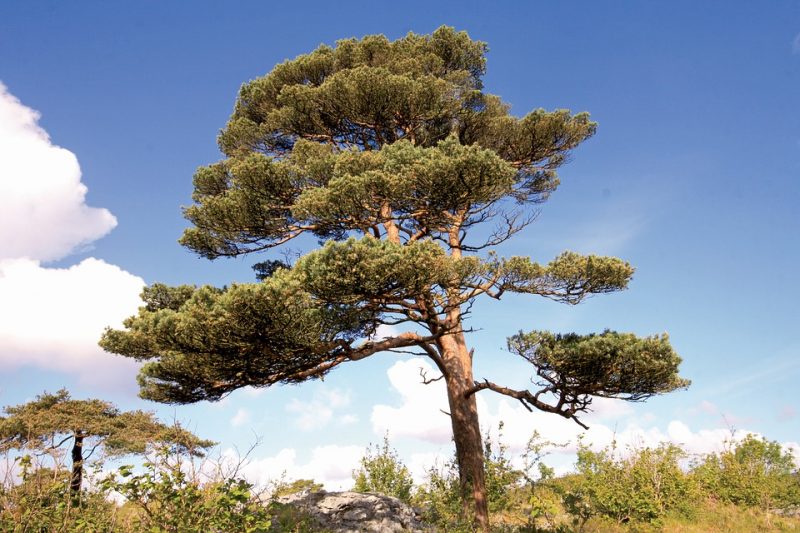
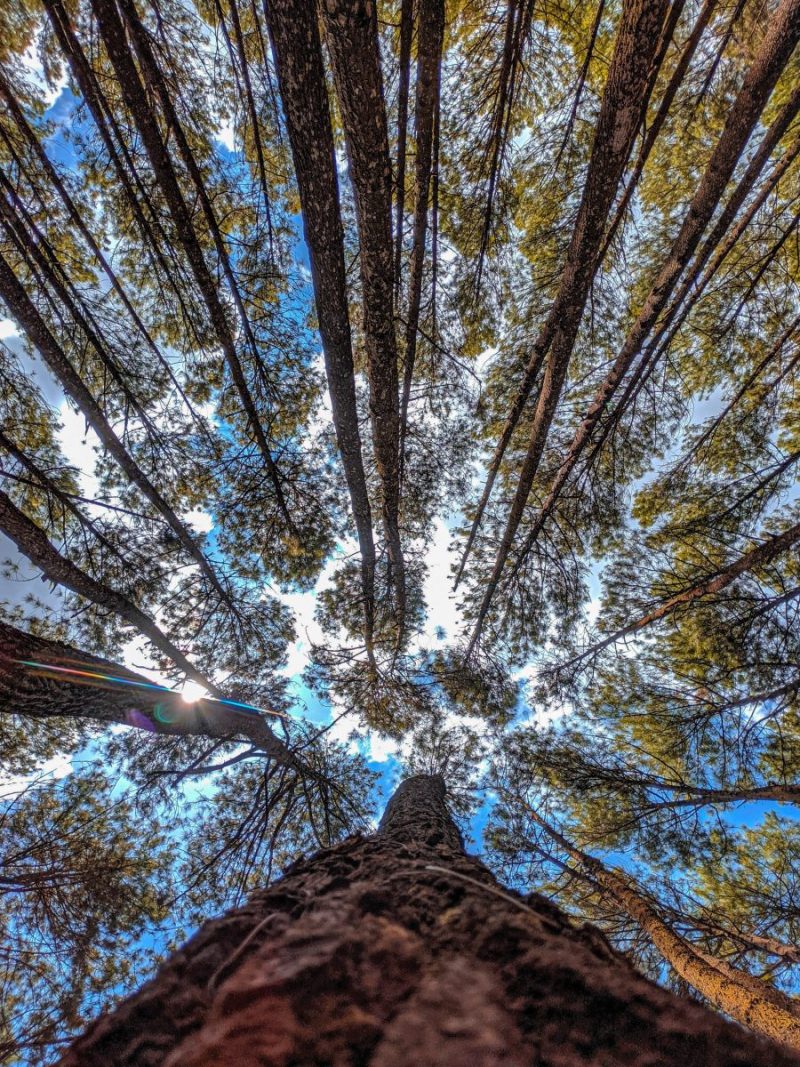
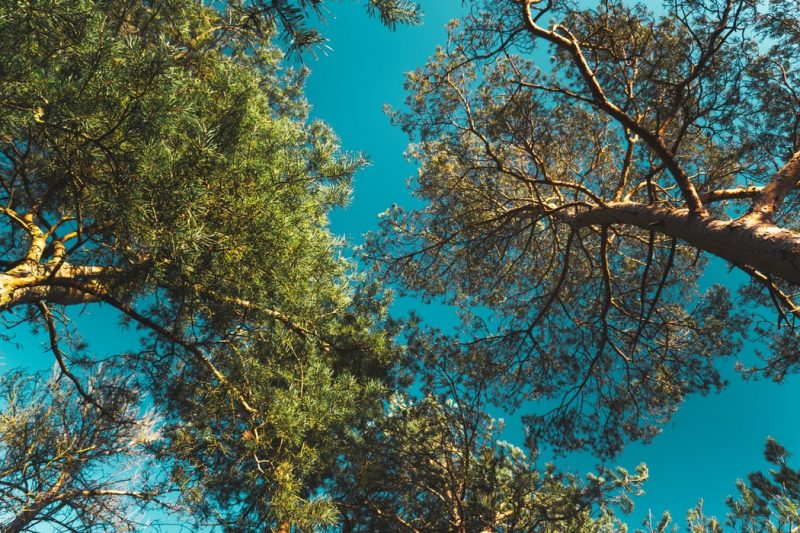
Species and varieties
Pinus Sylvestris (Scotch pine, Scots pine)
It is a species that is resistant both to frost and heat and sunstroke, as well as too humid climates and drought, and it stretches over a significant area of Europe and Asia. However, it is mostly encountered in the north of the continents, where it crosses the polar latitudinal limit of spruce forests. It is normally found at altitudes between approx. 300 m and 1900 m. Pine plantations can also be found in the lowland area.
The Scots pine reaches only in exceptional conditions heights higher than 40 m. At a young age, it can be easily recognized by its red-brick bark, which is more visible on the upper part of the trunk and on the branches. The acicular leaves are 3-7 cm long, are arranged in pairs in a pod, and have a sharp tip. The cones have a length of 3-7 cm and can sometimes be grouped 2-3 at a time in clusters. The cones are ovoid-conical, with a short peduncle, rhombic or pyramidal apophysis, and small umbilicus. It has 3-4 mm seeds, with a brown wing, 10-15 mm long.
Pinus Nigra (Black pine)
It is a size I tree which can reach heights of up to 40 m. It has a thick, scaly, gray-blackish rhytidome. The needles are grouped in pairs in a pod, are long (8-14 cm), sharp and rigid, colored in dark green, specifically clustered towards the top of the tendril. It has cones grouped 2-4 at a time in clusters, ovoid-conical, 6-10 cm long. The apophysis is rhombic, shiny, rounded at the top. The seed wing is 5-6 mm long, shiny, and black.
It can generally be found in small and scattered areas. It has special ornamental importance.
Significant plantations of Austrian black pine (Pinus nigra ssp. nigra var. austriaca) were created in the last century in some European countries, especially on the steep slopes near the localities.
Pinus Mugo (Mountain pine, Bog pine, Creeping pine)
This species can be found in the mountainous and subalpine areas of Europe and it frequently makes the transition from the spruce forests level to alpine pastures. It extensively develops at altitudes of 1400-2300 m, and it rarely grows together with spruce, larch, Swiss pine, or green alder. It has special importance in soil protection, but it has at the same time an aesthetic and pharmaceutical function. It also shelters some species of birds, insects, and animals.
The elastic stem of the mountain pine is growing along the ground (prostrate), whereas the crown is rising to a maximum height of 3 m. The tendrils are also elastic, and thus resistant to the weight of heavy snow and to the action of strong winds. The rigid acicular leaves are closely arranged around the tendrils, two in a pod. The cones are small, 2-5 cm long, and are recognizable by the umbilicus, which is arranged centrally and surrounded by a dark-colored ring.
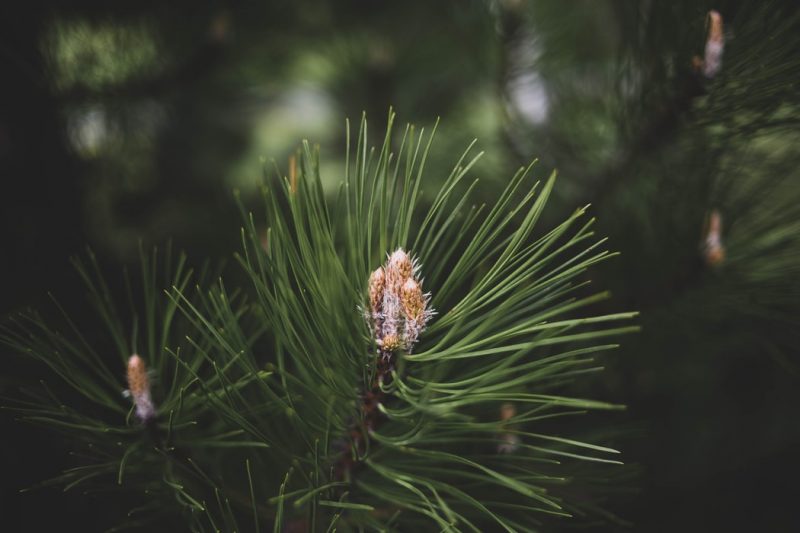
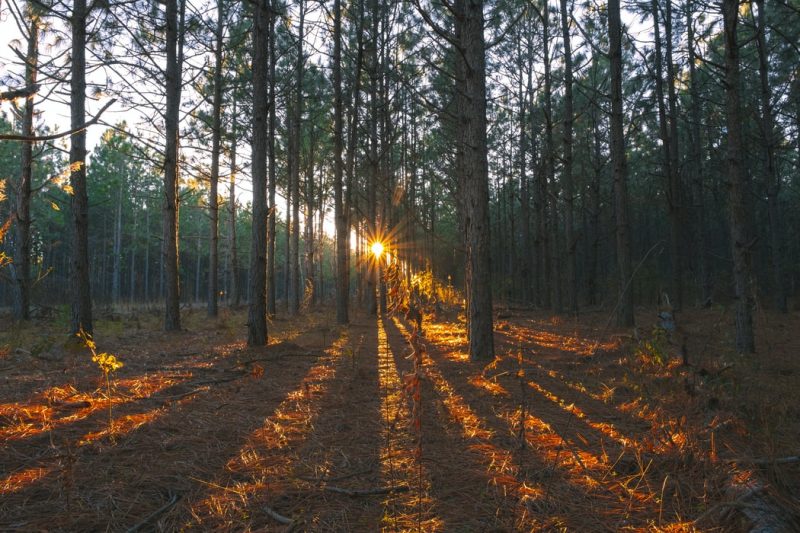
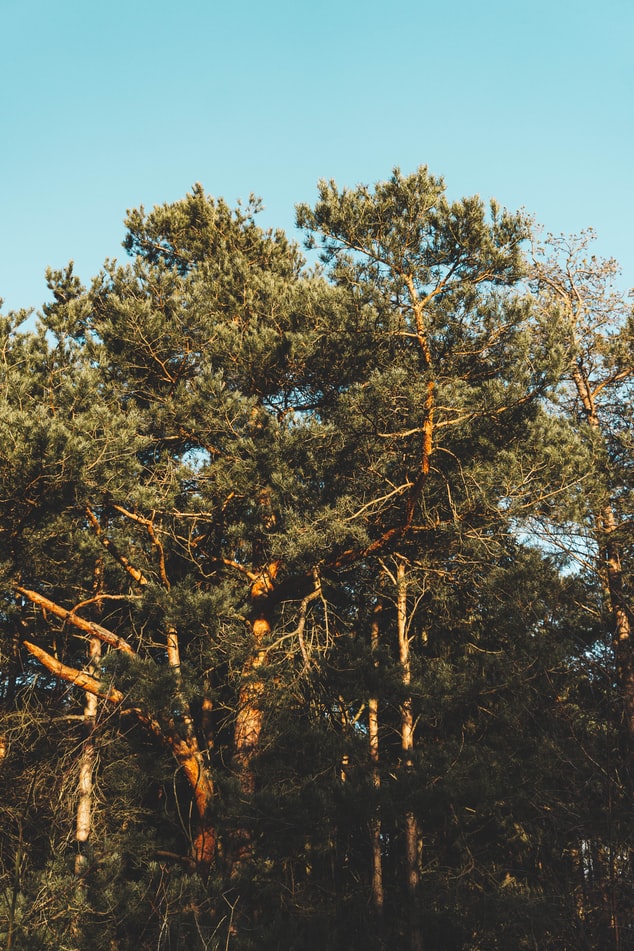
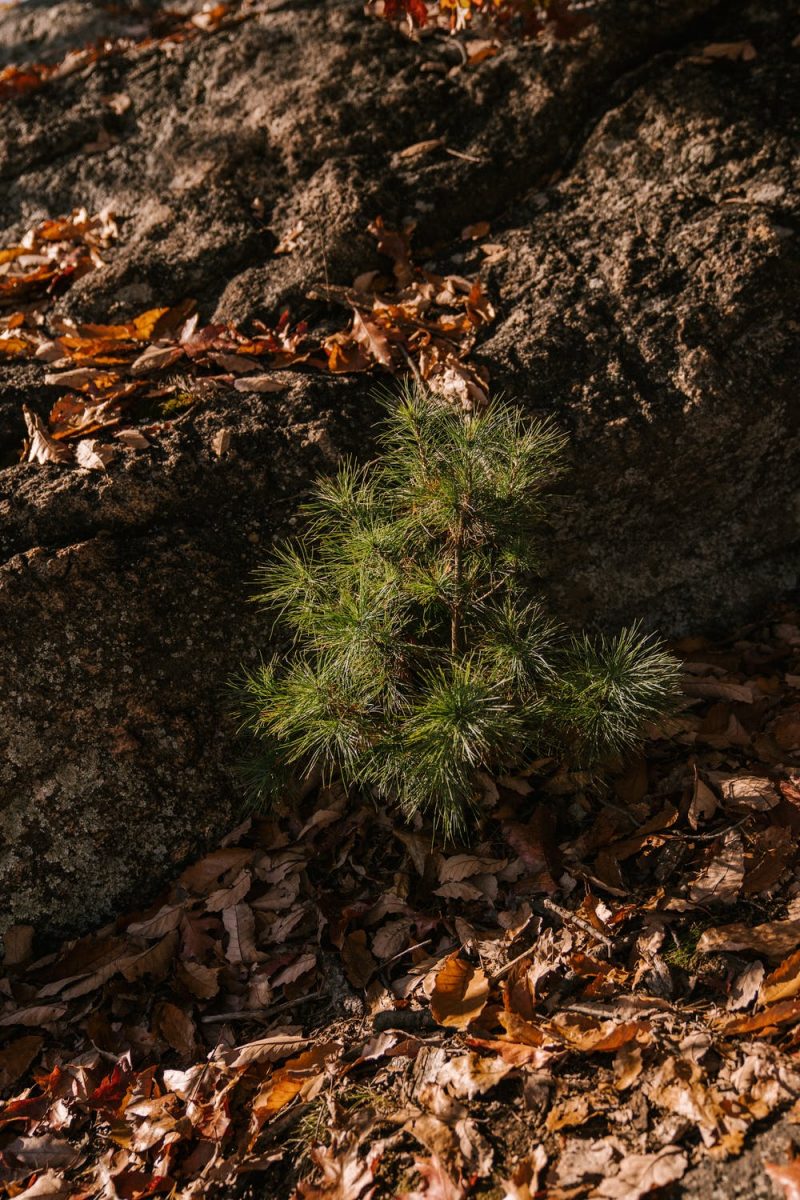
Pinus Ponderosa (Ponderosa pine)
It is a size I tree, which can reach heights of over 50 m, occasionally even 75 m. It has a straight stem, with a thick rhytidome, cracked in plates. It is also known as the western yellow-pine, a name associated with the color of its bark, which is yellow on the inside. The young tendrils are also yellow. The needles are very long, up to 28 cm long, rigid, sharp, arranged three in a pod. The cones are also large, 8-15 cm long, and have seeds with a 2-3 cm long wing. The apophysis is prominent and the umbilicus is strongly thorny.
The Ponderosa pine is native to North America and can be found in a few forest crops, dendrological crops, gardens, and public parks.
Pinus Strobus (Eastern white pine, White pine)
This is a size I tree which can have heights of a maximum of 50 m, with a straight stem and thin bark that remains smooth until old age and has characteristic resin “pouches”. The acicular leaves are thin and flexible, relatively long, 5-12 cm in size, clustered towards the top of the tendril in 5-pin pods. The fruits are represented by narrow-cylindrical terminal cones, droopy, 8-15 cm long.
It is a pine species native to North America, introduced in many countries both in pure plantations and mixed with beech, fir, spruce, larch, or other pine species.
Pinus Banksiana (Jack pine)
It is a pioneer species in the natural area of North America, tolerant to edaphic and climatic conditions. In some countries, only a few experimental Jack pine plantations were created, but it was found that it has not adapted to the existing environmental conditions. It is cultivated only for ornamental purposes. It can reach heights of up to 25 m, has a sparse and irregular crown and forms a scaly, dark rhytidome. The acicular leaves are short, only 2-4 cm in size, curved, not stinging, arranged in pairs in a pod. The cones are usually asymmetrical, ovoid-conical, 3-6 cm long. The tightly attached scales have a bright yellow apophysis, with the umbilicus slightly buried.
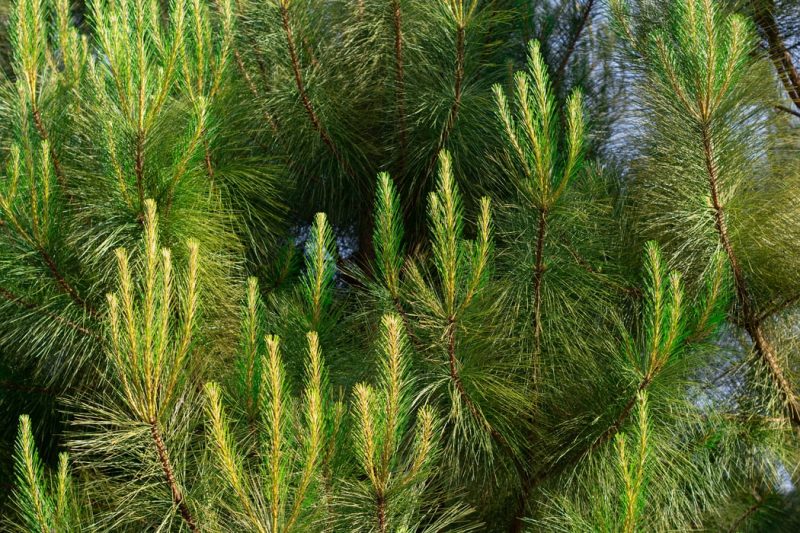
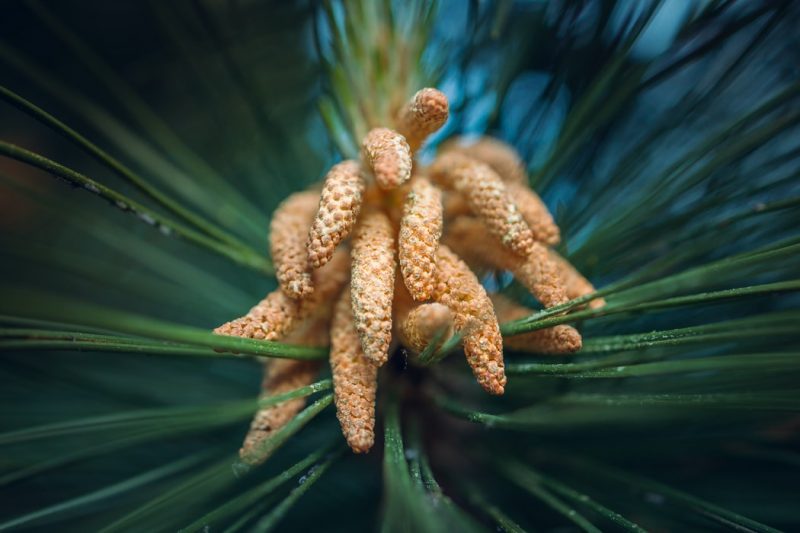
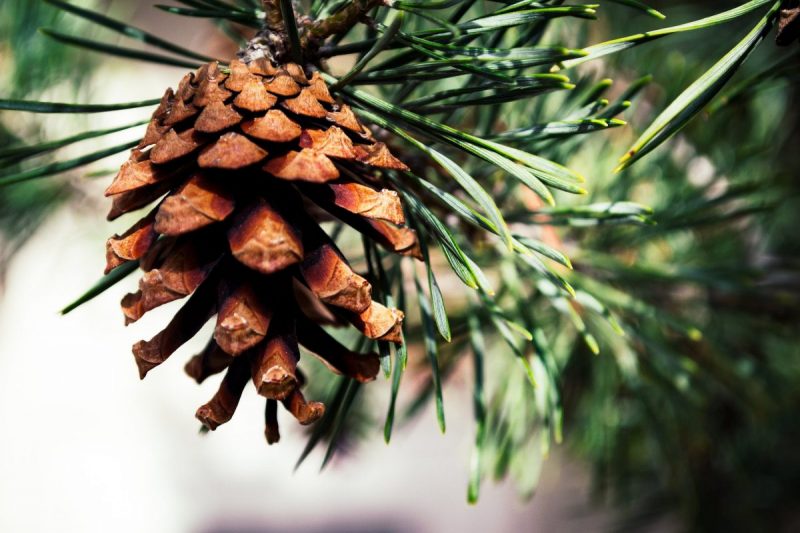
Pinus Contorta var. Latifolia
It is a widespread and important species in North America, introduced to other countries only as experimental cultures. Due to its resistance to soil and climatic conditions, it is a species recommended for plantations on degraded land. It can reach heights of 25 m, forming a scaly rhytidome from a young age, which becomes irregular and cracked as it ages. The 3-8 cm long needles stand in pairs in a pod, and the 2-6 cm long cones usually remain attached in the crown for several years. It has a shiny apophysis and a mucronate umbilicus.
Pine Wallichiana (Bhutan pine)
This tree has a special aesthetic value and it can reach or even exceed the height of 50 m. It has gray, smooth bark and a pyramidal crown. The needles are very long, up to 18 cm long, thin and flexible, 5 in a pod. The cones are also large, 15-30 cm long with peduncles. The natural areas where the species grows include the high altitude zones (1400-4000 m) of the Himalayas. In other countries, it was cultivated for ornamental purposes.
Pinus Peuce (Macedonian pine)
This species is native to the Balkan peninsula, where it grows at altitudes between 1600-1900 m, and rarely it can also grow at altitudes up to 2400 m. It can also be found in dendrological parks and gardens. It reaches heights of up to 30 m and has a narrow crown. The needles are 5 in a pod, they are straight and rigid, with lengths between 7-12 cm. The cones are 8-15 cm long and have peduncles.
Pinus Cembra (Swiss pine)
This tree is up to 25 m tall, with 5 needles of 5-10 cm in a pod, clustered and oriented towards the top of the tendril. The cones are straight, upwards-oriented, 5-8 cm long, with convex apophysis and mucronate umbilicus. The scales of the cone become removable after three years and hide unwinged seeds which are about 1 cm long. This species grows in mountainous island areas in Europe, usually at altitudes between 1400-2000 m. At high altitudes, you can see specimens in the form of a shrub, with crooked trunks and asymmetrical crowns. The physiological lifespan is worth mentioning since some specimens reach the age of about 1000 years.
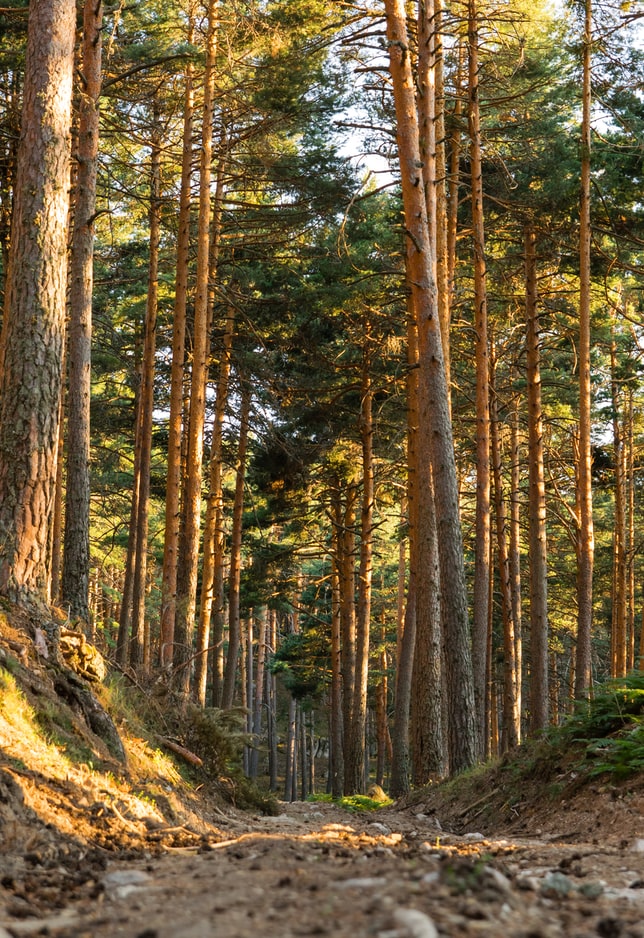
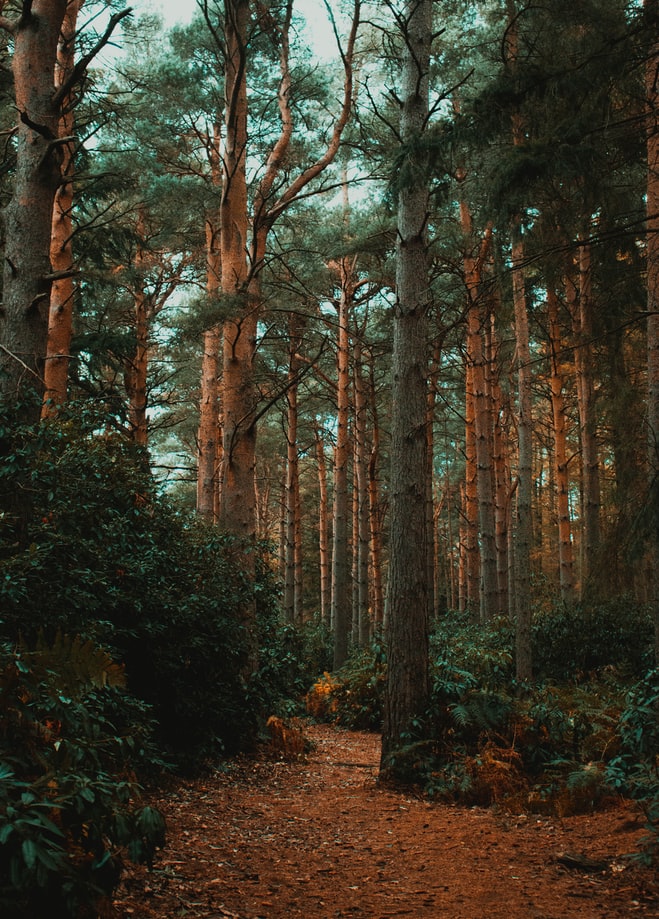
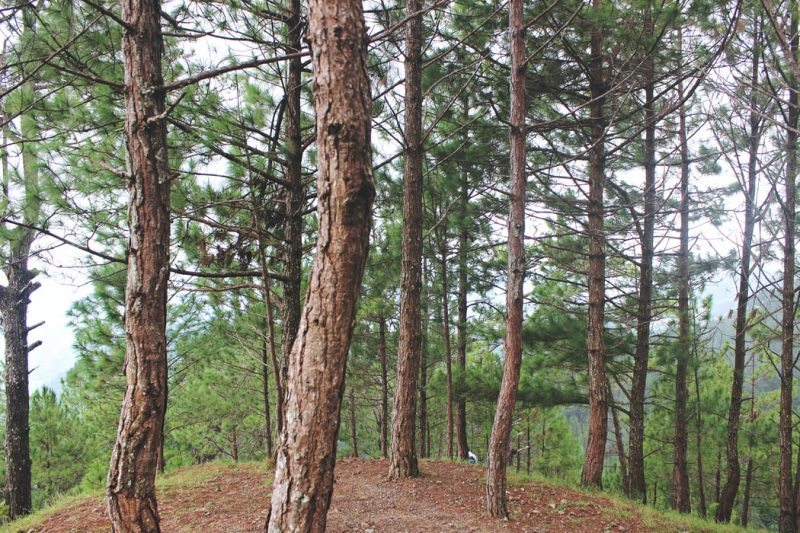
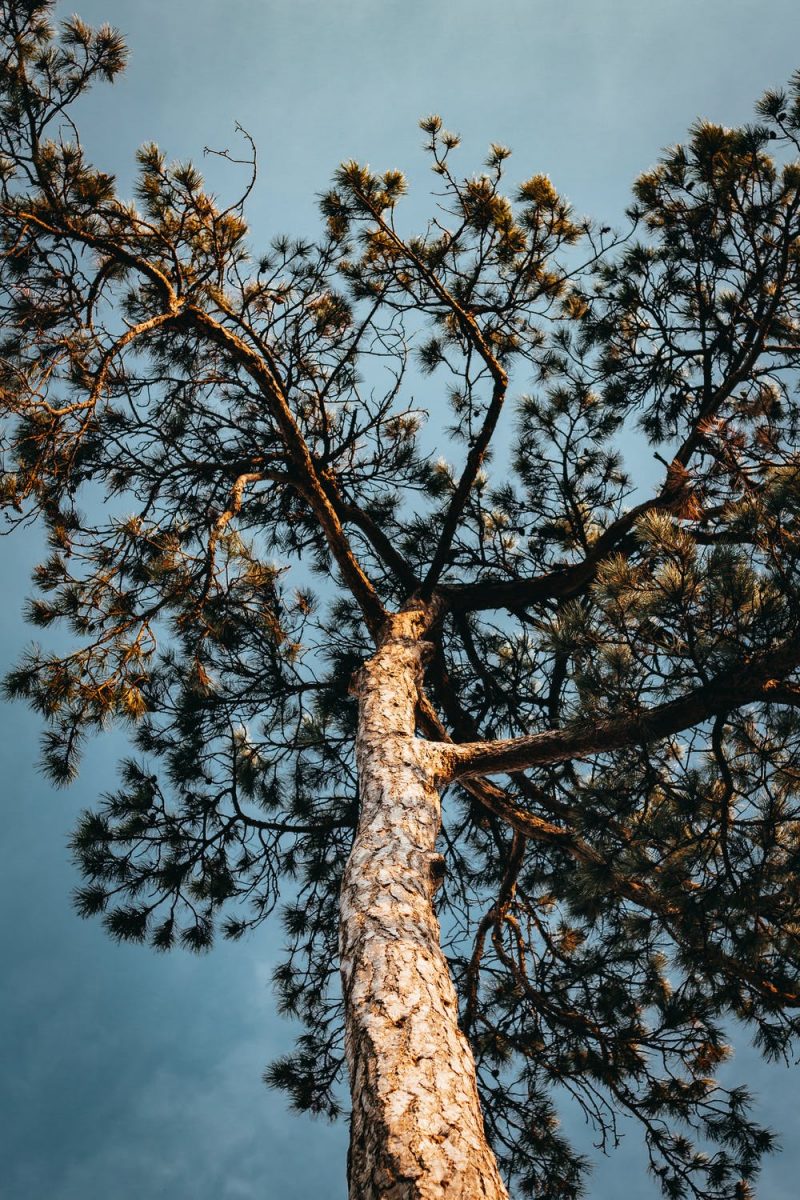
Care
Light. Most pines prefer abundant light. Some exceptions are the Eastern white pine, the Bhutan pine, and the Swiss pine at low altitudes, as they develop well in partially shaded areas. The Pinus contorta seedlings are very resistant to shade, but at maturity, they need enough light.
Soil. Most pines grow well in any type of soil, even in very poor, shallow, sandy ones (Scots pine, Jack pine) or on rocks (Black pine, Pinus contorta ). However, all species grow better on nutrient-rich soils, and the Eastern white pine is such an example as it has special demands in this regard. The Swiss pine cannot withstand sandy or shallow soils.
Temperature. The Scots pine, Black pine, Ponderosa pine, and Jack pine can withstand high temperatures for a long period of time. Pines located in high-altitude areas have a high tolerance to frosty winds and late and early frosts, as well as high-temperature variations (Swiss pine, Eastern white pine, Macedonian pine, Pinus Contorta, Ponderosa pine, Scots pine, Black pine).
Watering. Watering is usually not necessary, as most pine species are drought resistant. Pinus Strob is an exception in this sense, being a drought-sensitive species. The Bhutan pine and the Swiss pine prefer well-watered soils.
Fertilization. To stimulate growth, specific fertilizers can be applied during the growing season.
Recommended products
-
You can find products on a different store
Change Store -
You can find products on a different store
Change Store -
You can find products on a different store
Change Store -
You can find products on a different store
Change Store -
You can find products on a different store
Change Store -
You can find products on a different store
Change Store -
You can find products on a different store
Change Store -
You can find products on a different store
Change Store -
You can find products on a different store
Change Store -
You can find products on a different store
Change Store -
You can find products on a different store
Change Store -
You can find products on a different store
Change Store -
You can find products on a different store
Change Store -
You can find products on a different store
Change Store -
You can find products on a different store
Change Store -
You can find products on a different store
Change Store -
You can find products on a different store
Change Store -
You can find products on a different store
Change Store -
You can find products on a different store
Change Store -
You can find products on a different store
Change Store -
You can find products on a different store
Change Store -
You can find products on a different store
Change Store -
You can find products on a different store
Change Store -
You can find products on a different store
Change Store
Planting
It is important to have the pine seedlings purchased from authorized nurseries. The smaller the size and age of the seedlings, the easier it is to adapt to the new conditions. The optimal age of the seedlings at the time of planting is 3 years (1 year in the solarium and 2 years in the nursery). It is recommended to use seedlings with earth bundles around the root, thus the acclimatization chances are higher. The right time for planting is in autumn or spring when the soil is not frozen and there is no danger of frost. The seedling needs to be placed in an upright position in a hole of a suitable size. The hole has to be filled with fertile soil to ground level, after which the soil around the seedling has to be well-trodden and watered abundantly. This eliminates air gaps around the roots. The planted seedlings must be watered regularly, but avoid excessive watering.
Propagation
Propagation can be achieved through several methods:
- seed propagation: the cones have to be harvested after the seeds are completely mature and ripened (e.g. in August for the Eastern white pine, in September for the Scots pine). The seeds have to be selected before being planted, the unhealthy ones being destroyed. For this process you can use a glass of water, in which you should place all the seeds, the ones that sink are the best ones to plant. The seeds have to be placed in the soil at shallow depths. These germinate late, even 3-5 months after planting.
- multiplication through grafting: it is rarely used in the case of pines. Ornamental trees with various aesthetic characteristics can be obtained. As it is a difficult method to execute, it is recommended to have it performed by specialists.
- propagation through cuttings: very rarely used in the case of pines.
In addition:
- pines have a long physiological lifespan: Swiss pine – around 1000 years, Scots pine – over 600 years.
- pines have low requirements for environmental conditions;
- the pines have a special appearance due to the acicular leaves grouped in membranous pods;
- pines are prone to the attacks of European spruce bark beetles, wasps and other pests.














































































































































































































































































































































































































































